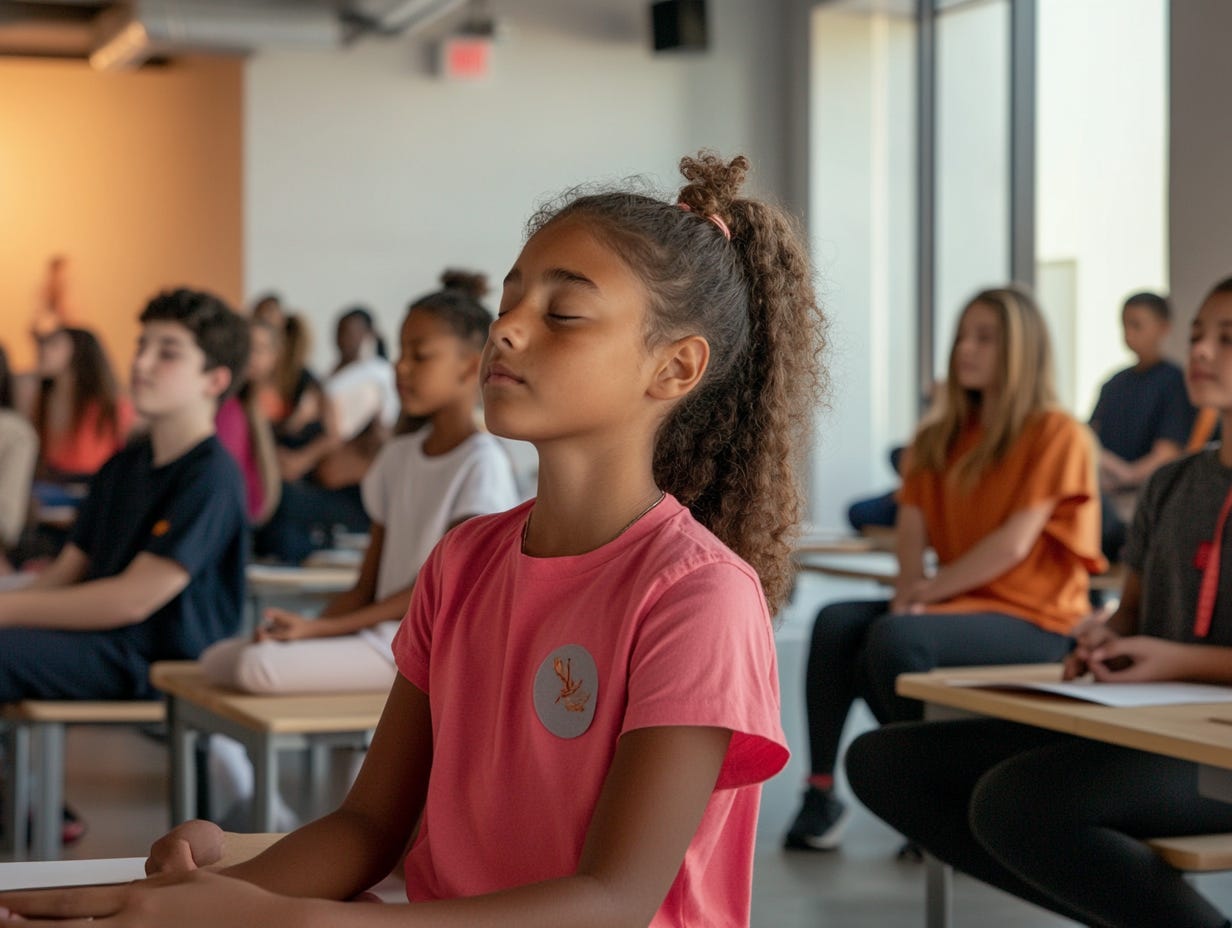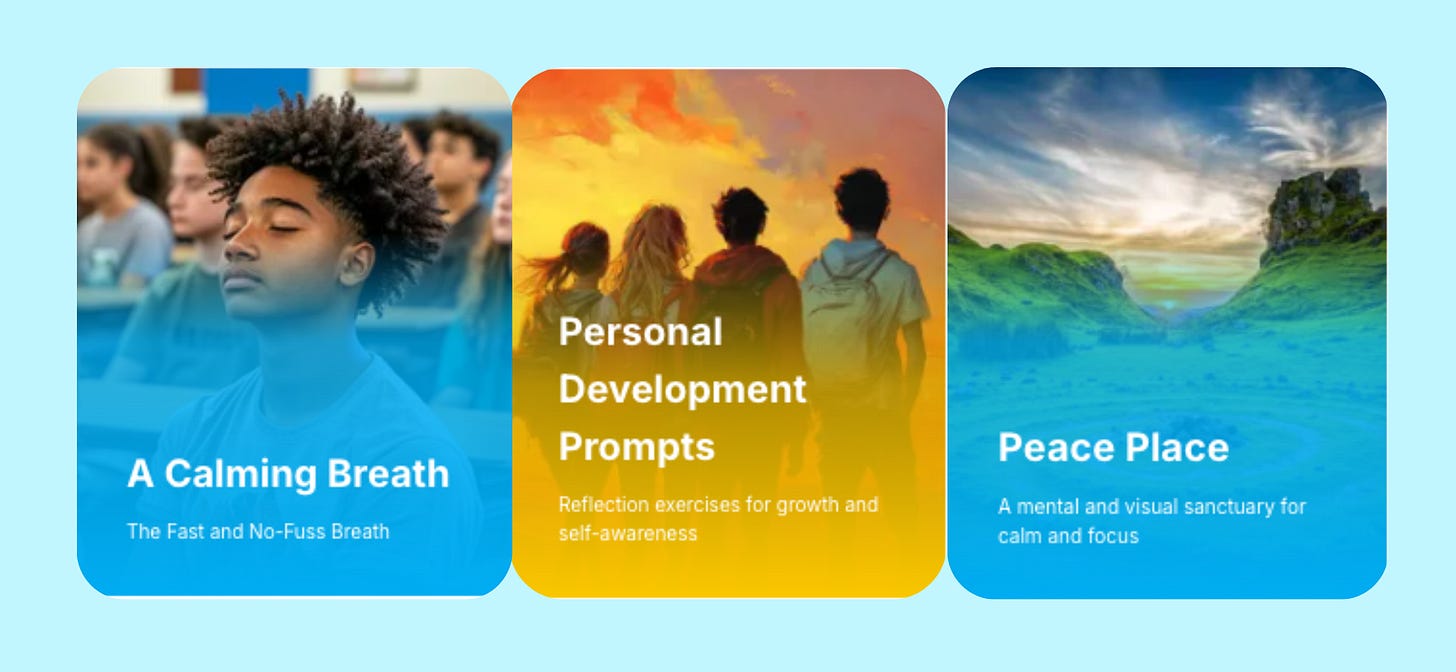Mindfulness: The First Few Minutes
We can't all travel together if we don't start in the same place
Calm the mind, prime the brain
When students walk in, their minds are still racing from the hallway, conversations, social drama, unfinished homework, a thousand little distractions. If you jump right into teaching, you’re competing with all of that internal and external noise.
But a quick opening routine such as journaling, box breathing, or even a single calming breath does something powerful. It shifts students from scattered to centered. The chatter fades, the room settles, focus sharpens, and you have their attention without the battle.
It’s not lost time. It’s buying yourself a smoother lesson and fewer disruptions the rest of the period.
3 Proven Mindful Strategies
Strategy in Action: 🧘♀️ Confidence Reset
Personal Development Prompts
Share 5 prompts. Discuss example responses. Students select one each day.Peace Place Visualization
Invite students to close their eyes and picture a place where they feel calm and safeA Calming Breath
A strategy to help students calm down, shake off tension, and refocus, without a structured approach.
Why It Work
A short pause activates the brain’s default mode network (DMN), the system tied to reflection and emotional regulation. Research shows that even brief practices such as journaling or breath awareness engage this network, quiet the amygdala, and strengthen prefrontal control (Lieberman et al., 2007; Memarian et al., 2017).
When the DMN is engaged, the brain cannot at the same time run the external attention networks that often fuel classroom disruptions. It is a kind of neural tradeoff (Buckner & Carroll, 2007).
The result is a calmer, more grounded classroom, where internal chatter fades, focus is restored, and student brains are primed for learning. When this shift happens before instruction begins, teachers will find students are more open and prepared to learn. They feel more connected to one another. They are less impulsive and reactive.
Other Quick Mindfulness Options
✨ Inner Voice Awareness – Help students notice their self-talk and reframe negative thoughts.
✨ Attention Balance Control – Challenge students to a balancing competition to improve attention and control.
Final Thoughts
With 35 years in education, including more than 25 in the classroom, I know from experience this is a true game changer. In an urban district, I taught both regular and special education and used what I called “Relaxation” every single day. The difference it made was unmistakable, for my students and for me. This simple routine helped students quickly settle into a calm, focused state where learning could begin. Without it, teaching felt like trying to watch a video that keeps buffering. You start, then stop, then go back and repeat what should already be moving forward. That brief pause changed everything, shifting the entire class into one shared state, ready to learn together, no more buffering.
That’s it for this week. If you are facing behavior challenges or need a learning strategy, please comment or send me a message. I am happy to chat and support you however I can.
👋🏼 Thanks for reading,
Debbie@brainzones.org





